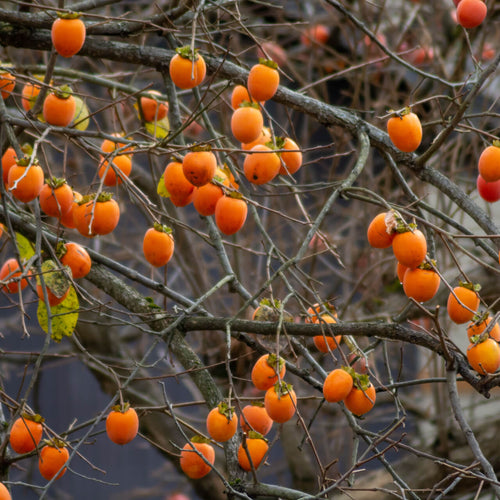Growing Your Own Produce
In the ever-evolving world of gardening and sustainable living, "The Vegetable Gardener's Bible" by Edward C. Smith is a timeless and invaluable resource for enthusiasts and novices alike. This comprehensive guidebook provides a wealth of knowledge and practical advice on cultivating a thriving vegetable garden. It is a beacon of inspiration for those seeking to grow their produce, fostering a deep connection between individuals and the earth. As we delve into the pages of this remarkable book, we discover a trove of insights and tips that empower gardeners to nurture bountiful harvests, promote sustainability, and experience the profound joys of tending to their gardens.
At its core, "The Vegetable Gardener's Bible" is a testament to the power of knowledge and the enduring allure of growing one's food. Smith's book offers a gateway to self-sufficiency and environmental responsibility in an era marked by increased interest in organic and locally sourced produce. With the guidance provided within its pages, individuals can venture on a voyage of discovery that transforms their backyards into lush, productive spaces, yielding a cornucopia of fresh, nutritious vegetables.
One of the book's standout qualities is its emphasis on accessibility. Smith adopts a beginner-friendly approach, making it easy for individuals with limited gardening experience to follow along and succeed in their endeavors. He demystifies the process, breaking it down into manageable steps anyone can understand and apply. From selecting the right location for your garden to choosing appropriate soil amendments, "The Vegetable Gardener's Bible" leaves no stone unturned, ensuring readers feel confident as they embark on their gardening journey.
In "The Vegetable Gardener's Bible," Edward C. Smith provides a guide to gardening and a blueprint for a sustainable and fulfilling lifestyle. This book encourages readers to forge a profound connection with the land, nurture the environment, and take control of their food sources. By championing organic practices, year-round gardening, and community engagement, Smith inspires a sense of responsibility and empowerment. It is a testament to the transformative power of tending to the soil, sowing seeds of self-sufficiency, and reaping the abundant rewards of a flourishing garden. This enduring masterpiece continues to sow the seeds of inspiration, ensuring a bountiful harvest of knowledge, health, and well-being for all who embrace its teachings.
A cornerstone of the book is its emphasis on organic gardening practices. Smith champions using natural and sustainable methods to nourish the soil and protect plants from pests and diseases. By removing harmful chemical fertilizers and pesticides, gardeners produce healthier, tastier vegetables and contribute to the environment's well-being. The book provides various tips and techniques for organic gardening, including composting, crop rotation, and companion planting, which foster a balanced ecosystem within the garden.
The Vegetable Gardener's Bible Covers Various Vegetables
Another striking feature of "The Vegetable Gardener's Bible" is its thorough coverage of various vegetables. Whether you're interested in growing leafy greens, root vegetables, or vine crops, this book covers you. Smith provides in-depth information on each type of vegetable, including its preferred growing conditions, planting and harvesting times, and everyday challenges. This comprehensive approach ensures that gardeners can diversify their harvests and enjoy a rich tapestry of flavors and nutrients throughout the growing season.
The book's garden layout and design guidance are invaluable for beginners and experienced gardeners. Smith emphasizes the importance of efficient use of space, helping readers maximize their garden's productivity, regardless of size. He introduces the concept of raised beds and square-foot gardening, optimizing space and making garden maintenance more manageable. Through thoughtful design, gardeners can create aesthetically pleasing and functional outdoor spaces that provide sustenance and beauty.
"The Vegetable Gardener's Bible" also emphasizes year-round gardening. Smith goes beyond the traditional growing season, delving into techniques for extending the harvest well into the cooler months. By exploring options such as cold frames, hoop houses, and winter gardening, readers can enjoy the satisfaction of fresh produce even when the snow is falling outside. This approach aligns with the growing interest in local and seasonal eating, enabling gardeners to reduce their reliance on store-bought vegetables year-round.
The Vegetable Gardener's Bible Has Many Valuable Aspects
One of the most valuable aspects of this book is the emphasis on sustainability. Edward C. Smith recognizes the importance of conserving resources and protecting the environment and integrates these principles into every facet of gardening. From his advocacy for organic practices to promoting efficient water use and waste reduction, Smith empowers readers to become stewards of the earth while growing their food. By adopting the sustainable techniques outlined in the book, gardeners can minimize their ecological footprint and contribute to a more harmonious relationship with nature.
"The Vegetable Gardener's Bible" excels in its practical advice and ability to inspire and connect with readers on a deeper level. Smith's passion for gardening shines through in his writing, inviting readers to share the profound satisfaction of nurturing plants and witnessing their growth. He speaks to the heart of every gardener, igniting a love for the craft and a desire to forge a lasting connection with the natural world. This book is not just a manual; it's a celebration of the human-nature bond.
Smith's advocacy for community gardening is another noteworthy aspect of the book. He highlights the positive impact of shared gardening spaces in neighborhoods, schools, and communities. These communal efforts foster a sense of unity and cooperation while promoting access to fresh, locally-grown produce for all. By encouraging readers to participate actively in such initiatives, "The Vegetable Gardener's Bible" reinforces the idea that gardening transcends the individual and can strengthen communities and enhance food security.
A critical theme throughout the book is the notion of self-reliance. Smith empowers readers to take control of their food sources, reducing dependence on commercial agriculture and mass-produced vegetables. In a world where concerns about food safety and supply chain vulnerabilities are on the rise, growing one's food becomes a rewarding hobby and a means of securing a more resilient future. Smith's teachings in "The Vegetable Gardener's Bible" equip individuals with the knowledge and skills to nourish themselves and their families independently.
The book also champions the nutritional benefits of homegrown vegetables. Smith emphasizes the superior taste and nutrient content of freshly harvested produce compared to store-bought counterparts. By growing various vegetables, readers can appreciate a diet moneyed in vitamins, minerals, and antioxidants while savoring their crops' full, unadulterated flavors. "The Vegetable Gardener's Bible" promotes the idea that good health begins in the garden.
Smith's writing style is accessible and engaging, making the book enjoyable. He presents information clearly and organized, with step-by-step instructions and helpful illustrations. The book's layout is user-friendly, making it easy to find specific information when needed. Whether you're a beginner gardener or a pro, the book's structure and language remain a valuable reference guide.
In conclusion, "The Vegetable Gardener's Bible" by Edward C. Smith is an indispensable resource for anyone interested in growing their produce. Its comprehensive coverage, emphasis on organic and sustainable practices, and passionate advocacy for self-sufficiency and community gardening make it a must-have for gardeners of all levels. With its timeless wisdom and practical advice, this book empowers individuals to connect with nature, savor the pleasures of gardening, and reap the rewards of their labor through fresh, delicious, and nutrient-rich vegetables. Through its pages, readers venture on an expedition that enhances their quality of life and fosters a deeper appreciation for the earth's bountiful offerings. "The Vegetable Gardener's Bible" is more than a book; it guides a greener, healthier, and more fulfilling life.



















































